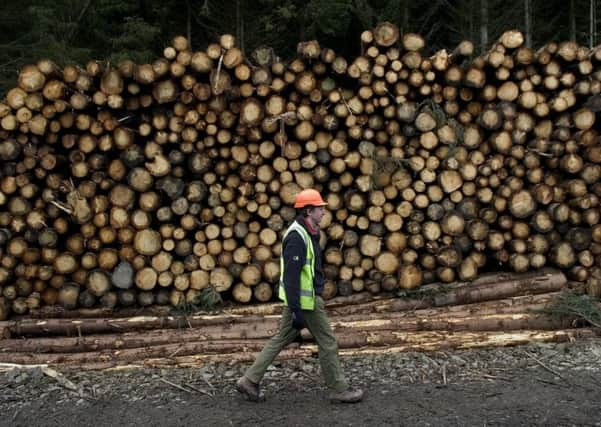Martin Waddell: The dark side of Scottish forestry
This article contains affiliate links. We may earn a small commission on items purchased through this article, but that does not affect our editorial judgement.


Forestry has helped regenerate rural areas by providing much-needed employment opportunities within these communities. The environmental benefits seem obvious and are lauded by business leaders and politicians alike, but what is actually driving this remarkable investment story, could it be better and does it have a dark side?
I’ll declare my interest right from the start. I have a forestry business that’s based in Edinburgh. However, the unique forests that we plant are located in the south of France. That’s a quirk of our forest product but, as a Scottish company developing forestry in the European Economic Area (EEA), the tax benefits that accrue to UK forestry investors/tax payers apply equally to any forestry planted across the EEA.
Advertisement
Hide AdAdvertisement
Hide AdThese forestry tax benefits stem from an accord between the countries of the EEA that agreed, nearly two decades ago, to commit to replenishing the vast lost forests of Europe.
Scotland’s forestry sector is a key part of this, but I see a critical problem that could threaten the future of the industry here. The financial drivers for forestry planting and management over the last few decades in Scotland have resulted in the dominance of one species of tree – the Sitka spruce, which makes up a staggering 70 per cent of the forested areas in this country.
It’s easy to understand why. Forestry developers seeking wealthy investors have plumped for Sitka spruce because it grows quickly and provides a high-quality softwood timber product, felled in as little as 25 years. Solid long-term returns in excess of 12 per cent, which have been largely unaffected by volatile markets seen since 2008, make sense to everybody involved.
However, Sitka spruce is native to the Pacific north-west coast of the US, not Scotland. Add to this a strategy of “clear felling,” where all the trees in a forest planted together are cut down and replaced together, and we have been left with an endemic monoculture habitat that fails to support the natural fauna and flora that a mixed pine forest would.
Furthermore, such monocultures can leave a forest susceptible to catastrophic diseases and pest damage, as happened in Thetford forest, which suffered from red band needle blight. If such an occurrence were to happen to Sitka in Scotland, it would spread rapidly and widely with enormous economic and social consequences.
A naturally managed mixed forest, including Sitka spruce with native pine species and deciduous trees, would go a long way to redressing the monoculture issues Scotland’s forestry sector faces. Add to this a move away from clear felling to a continuous cover model of forestry, where a canopy is always maintained, would further resolve these issues.
On the down side, this model would deliver diminishing returns, which may be enough to drive wealthy investors away. That’s a shame because the principles and ideology that founded the accord, where countries agreed to support the reforestation of Europe, was really driven by the desire to replant natural mixed and deciduous forests that where once indigenous in Europe and would be ecologically more beneficial.
Advertisement
Hide AdAdvertisement
Hide AdSadly, this is a clear case of economic pressures competing against ecological drivers, and at the moment, the former is winning the day.
• Martin Waddell is the founder and CEO of Truffle Farms Europe
